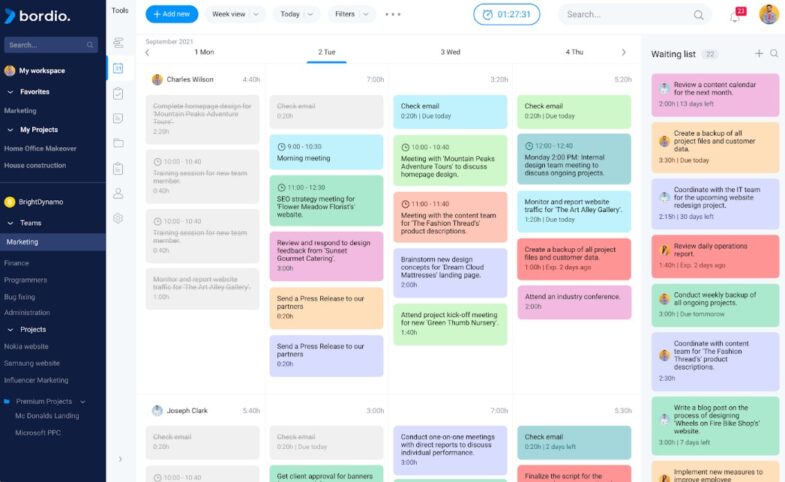Alright, have you ever thought about why we find games so addictive? It’s not just about the thrill of winning. It’s the challenges, the progress tracking, the rewards, and the interactive elements that make them so fascinating. Now, imagine capturing that same enthusiasm for our studies. That’s what gamification in education is all about!
Understanding the Power of Gamification in Learning
In today’s digital age, most students are naturally adept with technology. Integrating elements they love from the digital world into education can make learning fun and more effective. Let’s deep dive into some compelling reasons and tips about gamifying education.
1. Engagement is Key
We’ve all been in that zone where time flies because we’re so into a game. That level of engagement means we’re actively participating and focused. When learners are deeply engaged, they’re more involved, grasp concepts faster, and remember them for longer. With its interactive challenges and rewards, gamification can offer that involvement in education.
2. The Role of Digital Project Management Tools
Imagine if you didn’t have checkpoints or couldn’t save your progress in a game. Frustrating, right? In educational gamification, digital project management tools are those checkpoints. They allow educators to track a student’s progress, allocate tasks or resources, and ensure efficient completion of learning goals. It provides structure to the otherwise dynamic world of gamified learning.
3. Instant Feedback Matters
In games, when you make a move, you immediately determine if it is right or wrong. This instant feedback is empowering. In a gamified educational setup, when students get immediate feedback, it helps them understand their areas of strength and where they need to focus more, ensuring continuous improvement.
4. Customized Learning Paths
Every gamer has a unique strategy; likewise, every student has a unique way of learning. Some students are quick learners, while others need more time to absorb the information. Gamified systems can be tailored to suit each student’s pace and preference, ensuring they’re both energized and engaged. This process will completely captivate students. They will not only enjoy the learning process but will also strive to gain new knowledge in anticipation of a reward.
5. Healthy Competition

Source: freepik.com
Remember the rush when you see your name on a game’s high score list? No matter who says that the main thing is not victory, most people still strive to be ahead of everyone else. It gives us a sense of our power. Introducing leaderboards or a points system in learning can drive students to put in their best effort, fostering a spirit of healthy competition.
6. Collaborative Learning
Many games require teamwork for success. Gamified learning platforms can also be designed to promote group tasks, teaching students the value of collaboration, communication, and joint problem-solving. On such platforms, teachers can easily assign groups of students to work together. In addition, students can chat to share workloads, communicate, and do anything else they need to complete projects.
7. Lifelong Learning Habits
Games often encourage exploration, trial and error, and continuous engagement. By integrating these aspects, gamification can nurture curiosity and the habit of continuous learning among students. Technology is becoming more and more integrated into our lives every year. In addition to making the learning process easier through gamification, students also learn how to work and use modern technology. Moreover, teachers are on the same page with students.
8. Learning Through Failure
In games, failing a level doesn’t mean the end. It means analyzing what went wrong and trying a different strategy. Completing various levels and encountering setbacks doesn’t feel like a measureless disaster. Surely, they bring a little disappointment, but this does not lead to depression. Small mistakes only make students think about what they need to do differently to get to the next level. Similarly, gamified learning promotes the idea that mistakes are stepping stones to success, teaching students to be persistent and resilient.
9. Making Learning Accessible

Source: freepik.com
Mobile gaming means you can play anytime, anywhere. Similarly, gamified learning apps provide flexibility, allowing students to learn at their convenience during a bus ride home or a weekend. This does not require students to always have textbooks or notebooks nearby. All they need is a phone, tablet, or laptop to start completing tasks.
10. Real-world Applications
Games often simulate real-world challenges. Gamified learning can do the same, preparing students with practical knowledge and skills they’ll use outside the classroom. Mostly, this shows that there is no need to be afraid of mistakes and failures. On the other hand, it also helps to connect with other people. Students become more attuned to new groups of people, creative assignments, and task challenges.
Starting with Gamification in Education
For those eager to explore, here’s a concise list to kick-start the journey:
- Interactive quizzes ─ Instead of traditional tests, introduce quizzes that provide immediate feedback.
- Digital badges ─ Celebrate achievements with collectible badges, motivating students to aim higher.
- Story-based modules ─ Transform monotonous lessons into engaging narratives.
- Points system ─ Assign points for tasks, fostering a sense of achievement.
- Leaderboards ─ Highlighting top-performing students can serve as motivation for others.
To summarize, gamification isn’t just a trendy term—it’s revolutionizing the educational landscape. When we merge the engaging elements of gaming with the purpose of education, we create a powerful, effective, and enjoyable learning environment. So, the next time you’re engrossed in a game, think about how those same principles could make studying your favorite subject even more thrilling!

